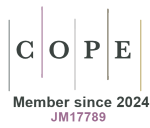Most read articles by the same author(s)
- Claudio Jommi, Antonio Addis, Nello Martini, Elena Nicod, Marcello Pani, Annalisa Scopinaro, Sabine Vogler, Price and reimbursement for orphan medicines and managed entry agreements: does Italy need a framework? , Global and Regional Health Technology Assessment: Vol. 8 No. 1 (2021): January-December 2021
- Anna Maria Marata, Walter Marrocco, Emanuela Arcangeli, Mattia Battistini, Giuliano Buzzetti, Riccardo Candido, Gianluigi Casadei, Francesco Cattel, Arturo Cavaliere, Agostino Consoli, Giovanni Corrao, Guido Didoni, Mauro Di Gesù, Alberto Giovanzana, Matteo Lenzi, Massimo Medaglia, Marta Meloncelli, Stefano Palcic, Marcello Pani, Francesca Patarnello, Emanuele Pria, Dario Scaduto, Valeria Tozzi, Marco Zibellini, Elisa Crovato, Drugs territorialization in the era of PNRR: perspectives, opportunities and considerations from a panel of experts , Global and Regional Health Technology Assessment: Vol. 9 No. 1 (2022): January-December 2022
- Costantino Di Carlo, Antonio Maiorana, Ignazia Poidomani, Roberto Ravasio, Adriano Vercellone, Clinical and Economic Management of Uterine Fibroids: The Point of View of a Decision Makers Board , Global and Regional Health Technology Assessment: Vol. 3 No. 3 (2016): September-December 2016
- Marcello Pani, The role of the hospital pharmacist to guarantee access and continuity of care for the management of epilepsy , Global and Regional Health Technology Assessment: Vol. 11 No. Suppl. 1 (2024): New organizational and governance strategies in the management of epilepsy in Italy
- Marcello Pani, Hospital pharmacists and their role in the management of epilepsy , Global and Regional Health Technology Assessment: Vol. 11 No. Suppl. 1 (2024): New organizational and governance strategies in the management of epilepsy in Italy









